Located in the folds of Hotel Omm—not far from Gaudi’s undulating, dream-like Casa Mila—Roca Moo is the Michelin-starred restaurant that shifted the shape of fine dining in Barcelona. The hotel itself (which you know is five-star before you even walk through the door) is celebrated for its cutting-edge design both inside and out. Its rooms are bright and sumptuous, made up of sliding doors and polished woods, and accessed via pitch-black corridors illuminated by a strip of violet light. There is a roof terrace overlooking the playful architecture, sun-bleached laundry lines and palm trees that color Barcelona’s skyline. Its façade is a wall of limestone, unpeeling like an open book in the wind. Considering all this, it’s hardly surprising to learn that Omm has its very own ground-breaking restaurant, tucked casually away at the back of the hotel’s communal hub, a wide space incorporating the reception and bar. The restaurant is as much a part of this free-moving space as anything else, separated only by a transparent bookcase and a few hardcover books on art and Catalan home cooking. The restaurant nods in a few aesthetic directions—Japanese tranquillity (greys, stone, and that silent, still garden), Scandinavian touches (sleek, minimal furniture and uncluttered tables), and the Spanish tapas bar (guests can sit at the counter and watch each dish prepared before their eyes). It is a soothing space of opulent greys, flaming red canvasses and stone sculptures. A floor to ceiling glass wall overlooks a garden trembling with greenery, with a delicate, mobile-like silver sculpture catching the sunlight between the leaves.
Overseen by the Roca brothers—the ones behind El Celler de Can Roca (the twice-ranked number one restaurant in the world)—Roca Moo’s kitchen is run by Juan Pretel. The Valencia-born chef’s food keeps comforting Catalan cooking close at heart, allowing global influence, unique produce and the odd dash of molecular gastronomy to reshape it. It shares philosophies with its cousin in Girona, offering clever food plated like artwork in a more comforting, homely space than one might expect from a Michelin-starred restaurant. It is places like these that have loosened the tie of fine dining, dispelling the reputation of white tablecloths and whispered voices molded by classical establishments.
![]()
The Weekend Edition
Get the latest L&T stories and exclusive notes from our editors delivered straight to your inbox—every weekend.
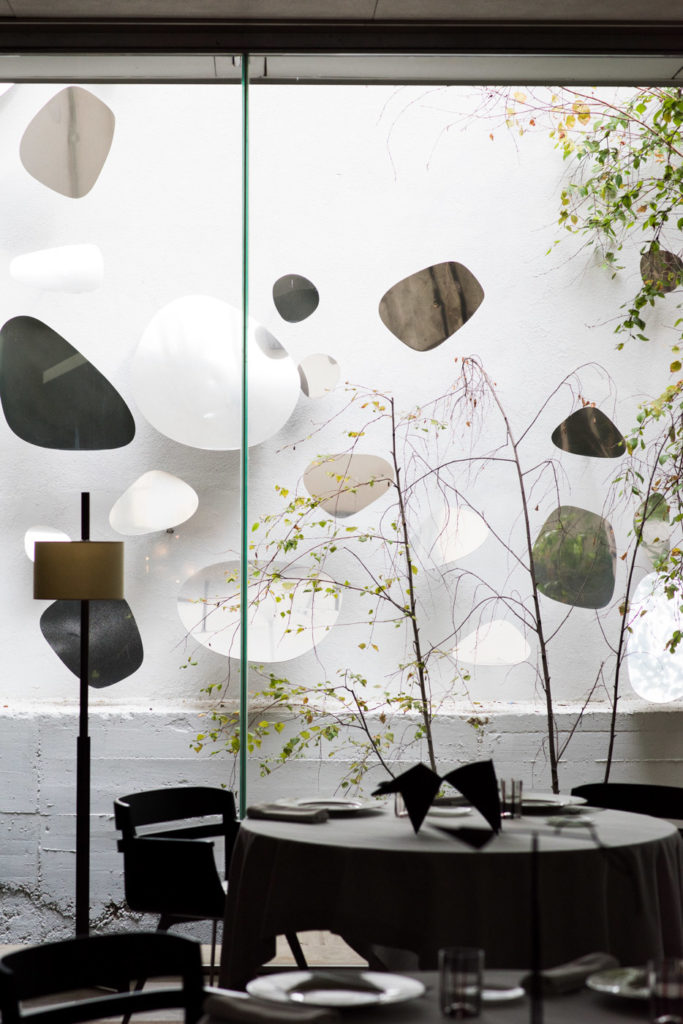
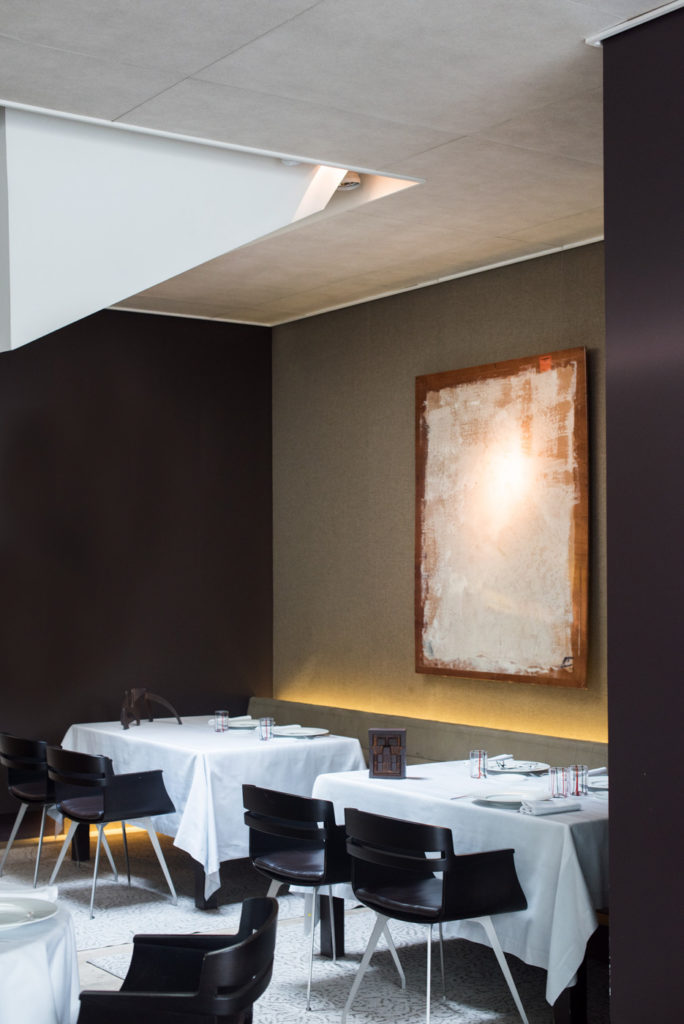

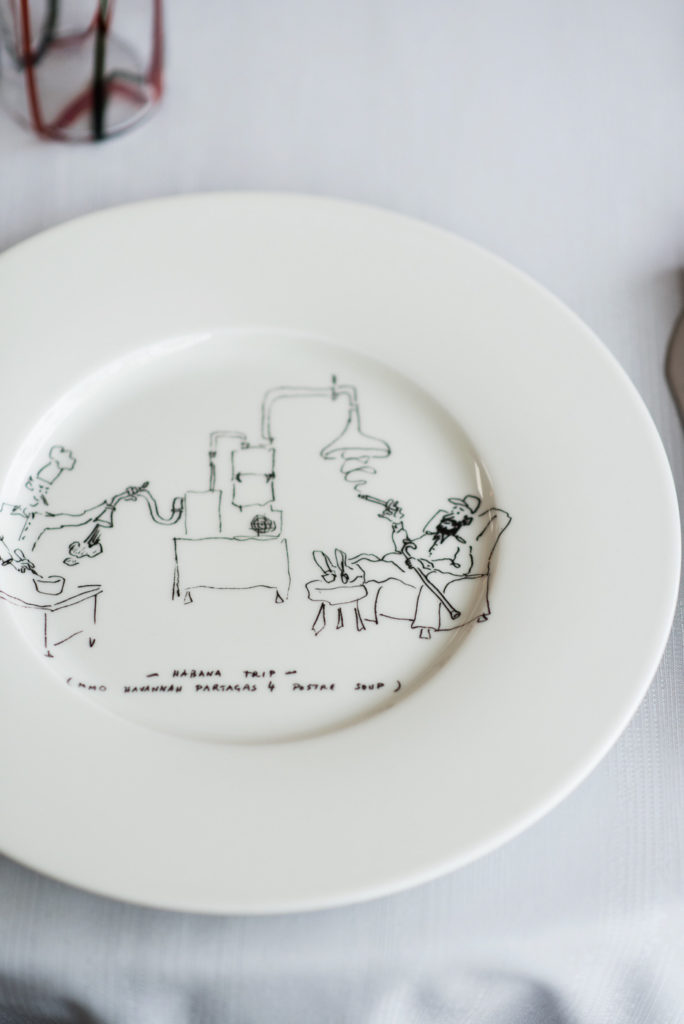
The tasting menu offers twelve to fourteen dishes, with a commensurate number of wine glasses to go with it. Sommelier Cecilia Guedes, originally from Brazil, hand-selects each bottle. Through Guedes expertise, Roca Moo prioritizes the wine, the food, and how the two combine. The price of the bottle, we are told, is “unimportant.”
“Roca Moo is like Disneyland for a sommelier,” Guedes laughs, unfastening a biblical wine list bound in red leather. She meets us at one of the restaurant’s tables where a leaning stone figurine stands in place of fresh flowers, wearing a black suit with a little silver corkscrew brooch pinned to her jacket. “In other restaurants, there’s a big focus on pricing and margins. Here, if I like the wine, I pair it,” she says. “The food is the same thing. If [Juan] needs the best carrot, or the best piece of pork, he’ll get it.” She gestures towards Pretel, who comes striding out of the kitchen and shakes my hand, the charged air of the kitchen all around him.
Pretel has been in Barcelona for just six years, and has watched the face of fine dining shift before him. “The big change in Barcelona, and in Spain as a whole, is that the guest knows more now,” he tells me. “They have a greater awareness of what they’re eating, and a greater interest in where it comes from.” This fits rather comfortably with Pretel’s own methods. Like many great cooks, he puts the quality of the dish in the hands of the ingredients, hunting tirelessly for the best of the best. As much as possible, he likes to cook with Spanish-born produce: suckling pig from Badajoz, rice from the delta 100 kilometers south, fish caught in nearby waters. “Proximity is important, but quality always comes first,” he says sternly. “If the best sauce is from Japan, I’ll get it from Japan.”
Guedes and Pretel work together closely on the pairing menu, shaping the food and drink around each other’s expertise. Some dishes are informed purely by Guedes’ choice of wine, while some recipes require her to hunt high and low for the perfect bottle. “He starts thinking about a plate and tells me some of his ideas, with the core ingredients,” Guedes explains as Pretel watches on. “Let’s say it’s fish with romanesco and artichokes. I’ll start to think about the texture; turbot is jellified, sole is tender. I try the sauce and the garnish, and start to explore about the wine. It takes time.”
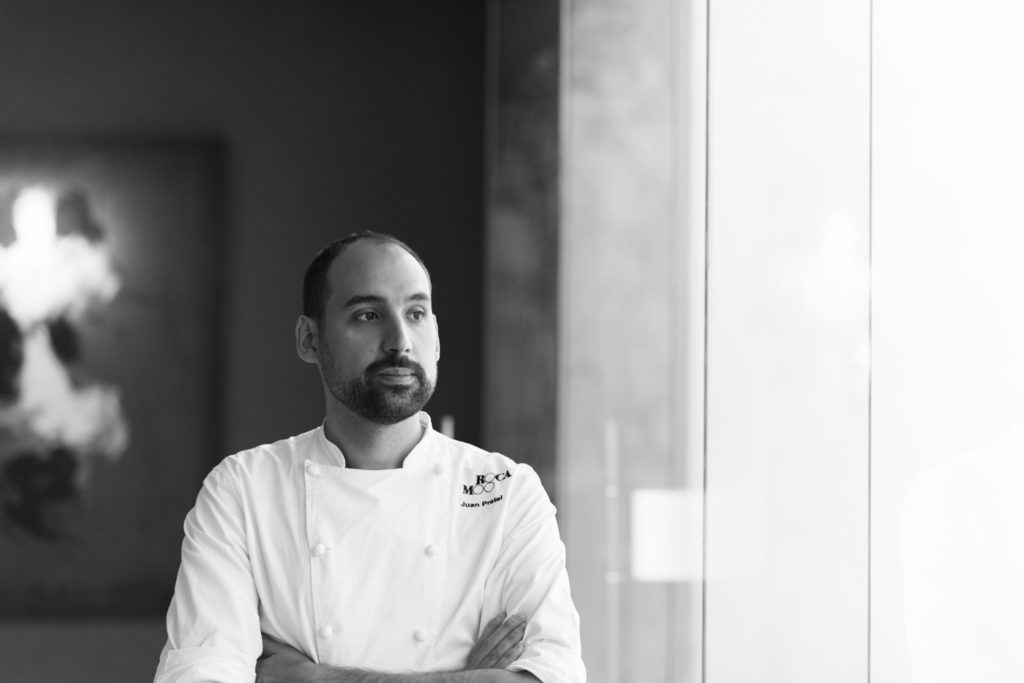

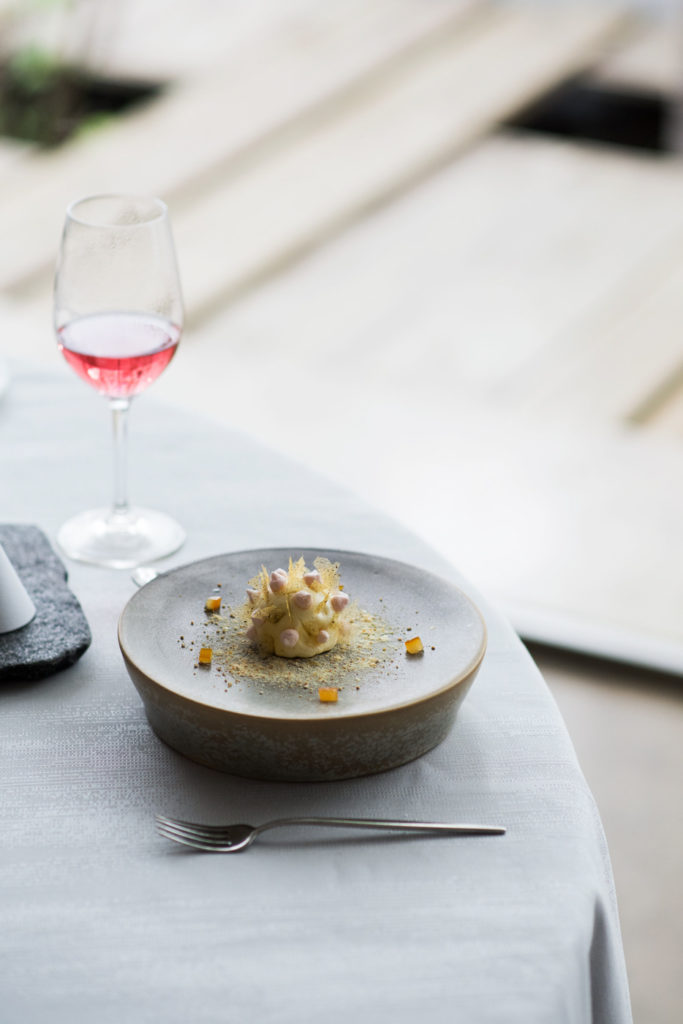
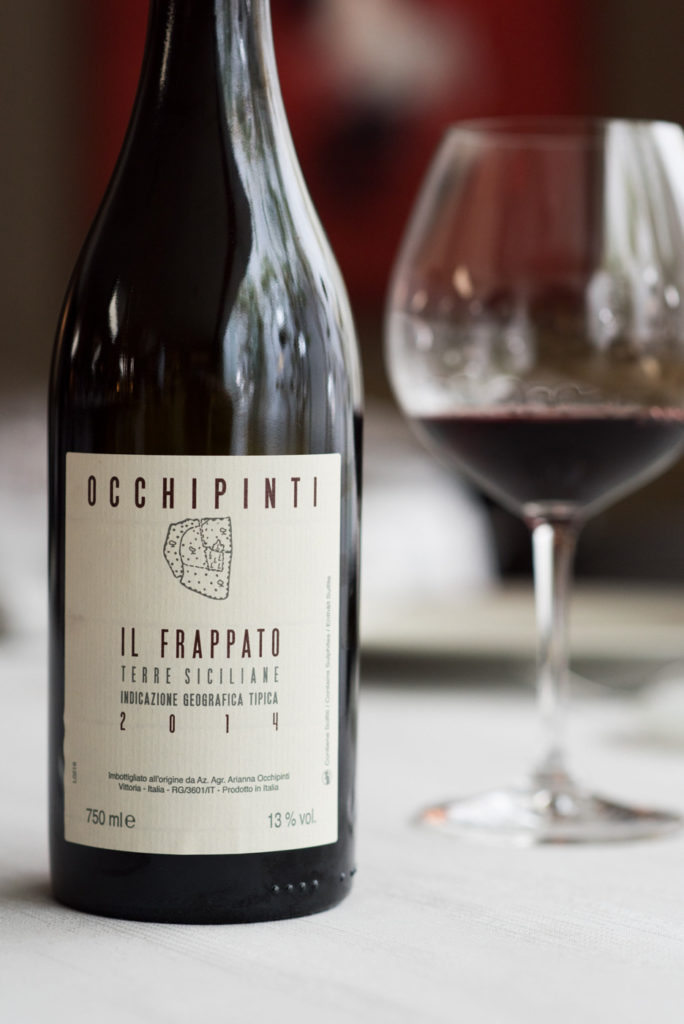
The restaurant has over 500 wines on offer, which, unsurprisingly, can prove daunting for the average diner. Pairing helps make such an extensive list approachable. “We began the wine pairing ten years ago, and it was an unusual thing to do back then. We have to keep the wines current, interesting and sometimes challenging,” she says before she wanders into the kitchen, returning with a rolled up cloth, which she unfolds on the table to reveal a biodynamic calendar. It is marked with crests indicating the moon’s effect on the taste and smell of wines, varying from day to day. “The pressure can affect your ability to smell, and completely change the taste of the wine,” Guedes explains excitedly. “Some days a bottle could taste rich and fruity, and the next it can smell like dirt. I always have this close by. It always surprises me how accurate it is,” she consults it closely. “Today’s a good day!”
Over the last few days, we’ve taken it upon ourselves to explore Barcelona’s booming natural wine scene. Our foggy heads and empty wallets prove it—the city is having a love affair with the stuff. I eagerly bring this up with Guedes, who has so far listed off a catalogue of grapes and blends, from those bottled on Catalonian soil to varieties from Spain, Georgia and Germany, but hasn’t uttered a word about this trend. “There is so much natural wine here now,” she says. “People have become obsessed with drinking wine without sulfites only. But they forget that we have a lot of very good wines with sulfites. It’s crazy because people eat meat from supermarkets and foods with a lot of sulphites, yet they refuse to drink non-natural wine. It’s strange, but also very exciting. I have two or three very radical natural wines here. I feel like guests grow to love it. It’s one thing when you drink it for the first time, and another thing by the end of the glass.”
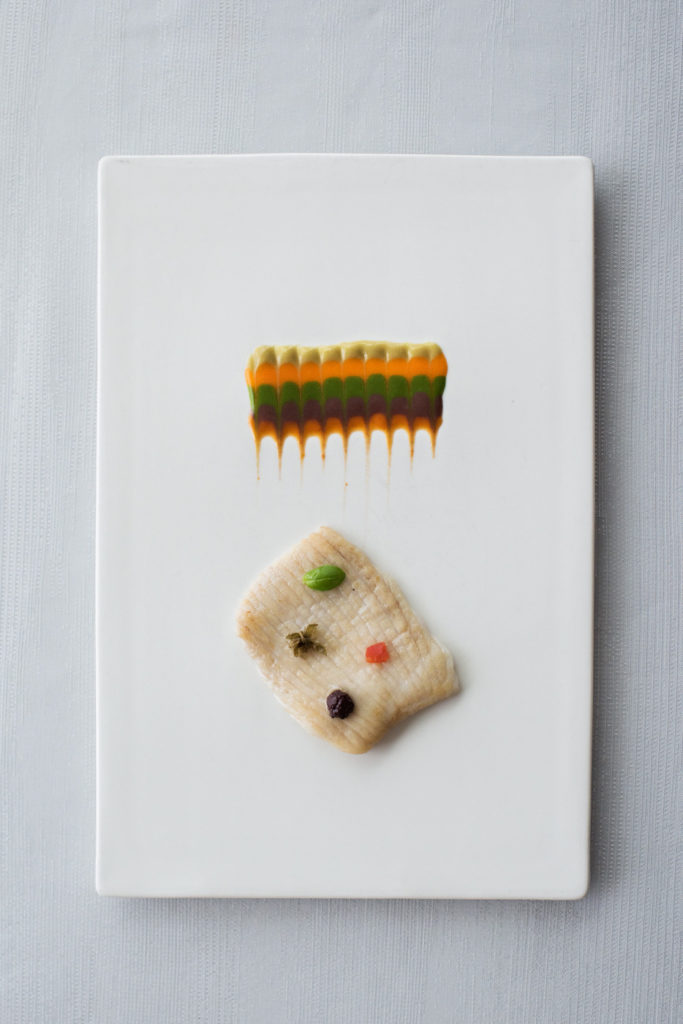
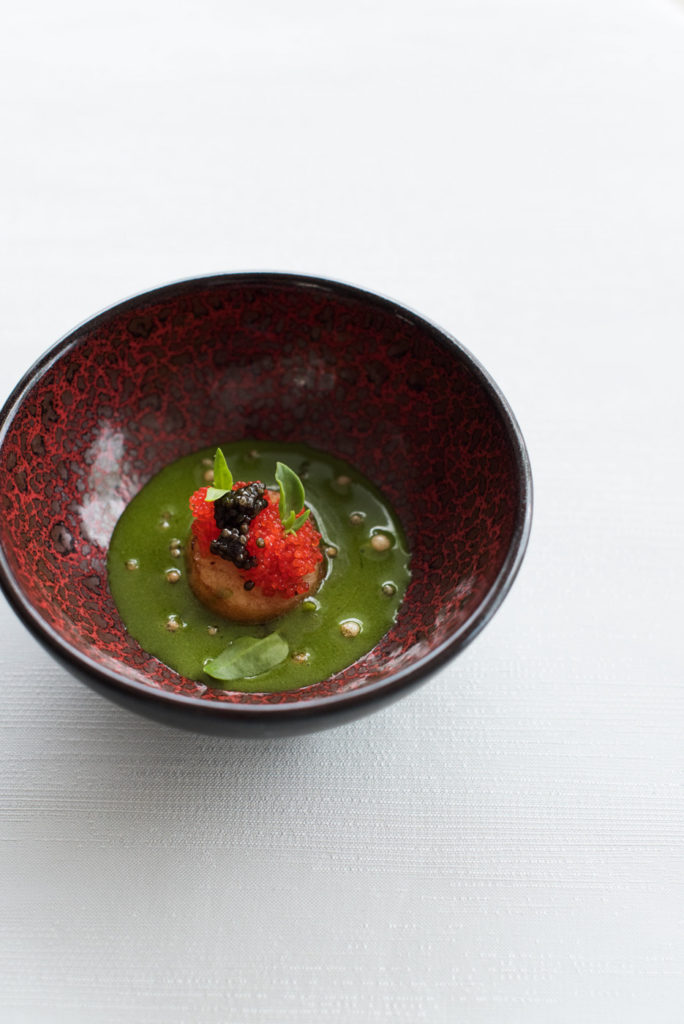
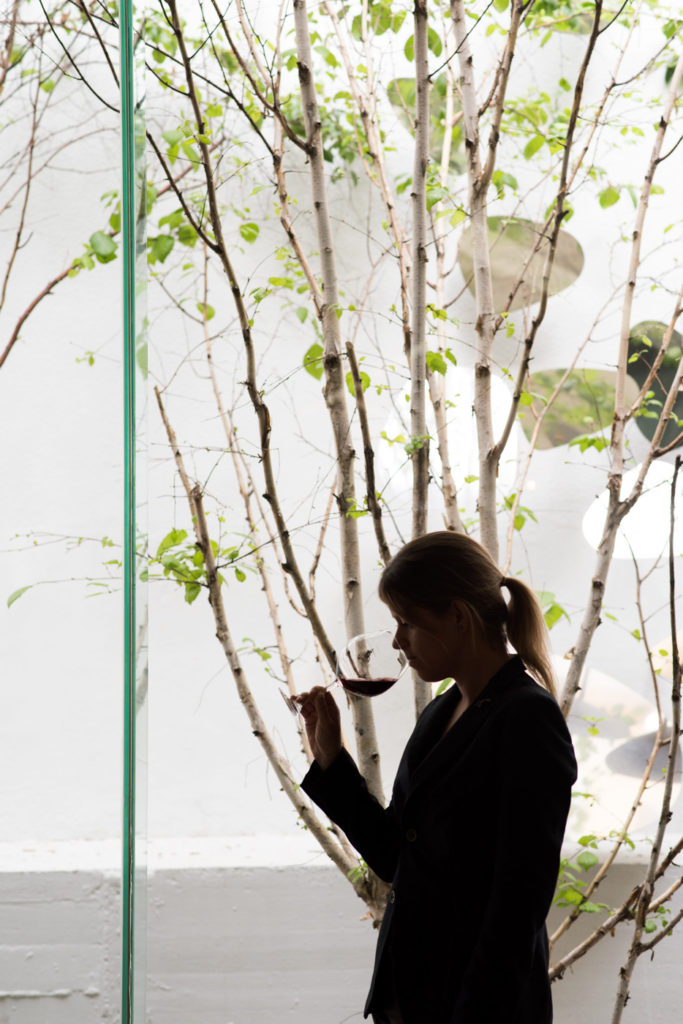
The reason for Roca Moo’s impact—and the ripple effect it has had upon Barcelona’s fine dining scene—is its ability to serve Michelin-worthy food in an unfussy environment. It has all of the trimmings of an exclusive, critically-lauded dining destination, from the impeccable service to bank-breaking wine, yet it remains approachable. This is in large part thanks to the man running the kitchen. “We have a formal concept, but we present it in a non-formal way,” Pretel explains. “The room is open, you feel comfortable, but you share the view, sights and sounds with everyone around you. But it’s important for us to create a place where people feel different. This place has to be special, and separate from everyday life.”
He continues, “When I’m not cooking, I try to eat in many different places. You have to keep learning, and keep trying other people’s food. Globalization makes it more important than ever to understand the food of the world. You have to allow yourself to be influenced by different cuisines and cultures, and always remain open.”

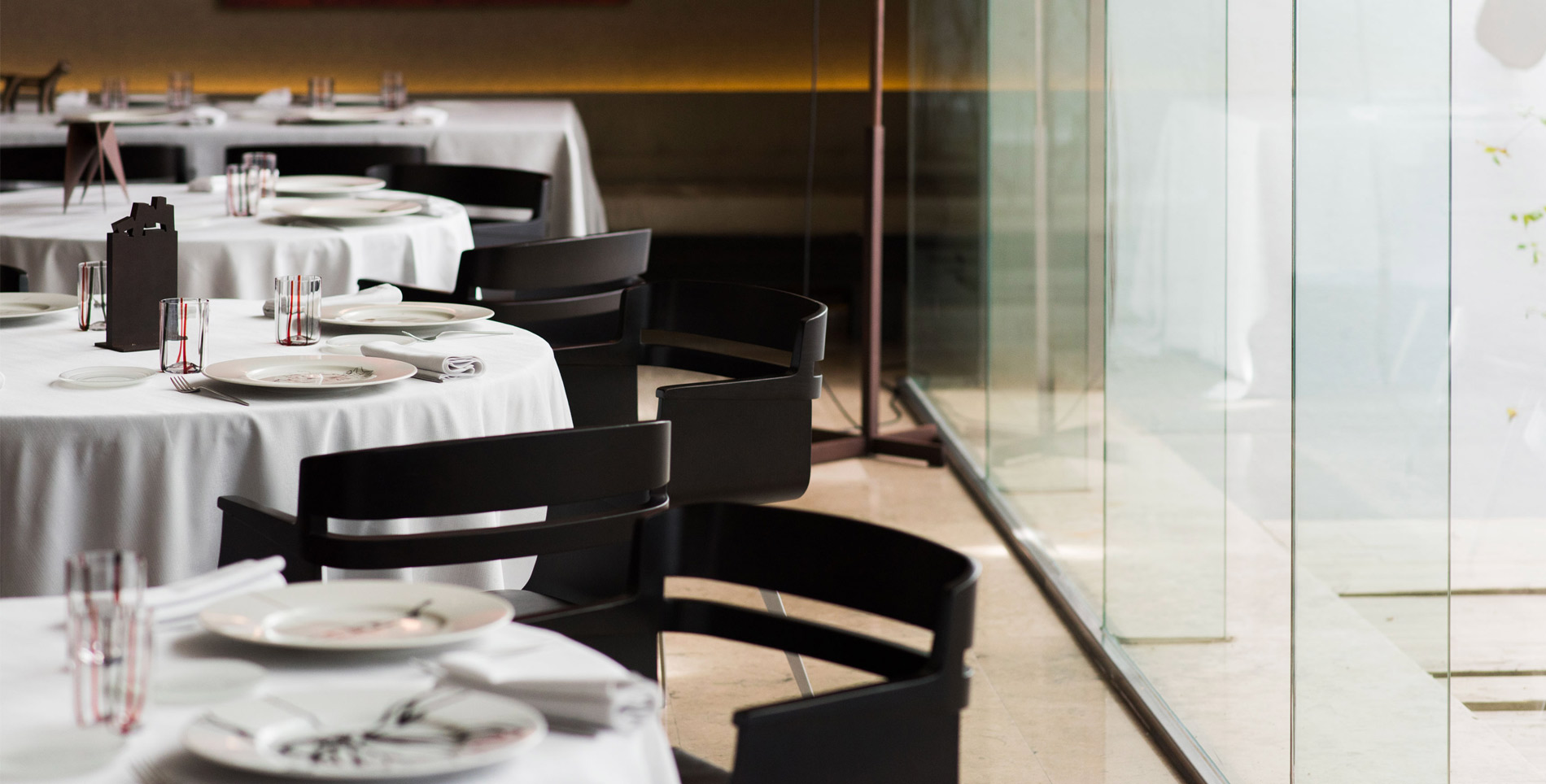


Our comments section is for members only.
Join today to gain exclusive access.